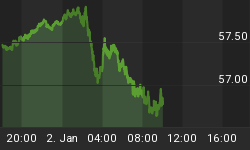Productivity is down 1% in the first quarter of 2016 following a revised 1.7% decline last quarter.
This is the fourth productivity decline in the last six quarters.
Meanwhile unit labor costs are up 4.1% in the first quarter following a revised jump of 2.7% in the fourth quarter of 2015.
The Bloomberg Econoday consensus was -1.2% for productivity and +3.5% for labor costs.
Highlights
The nation's output is slowing despite an increase in hours worked in what is the latest signal of structural weakness for the economy. Productivity fell at an annualized 1.0 percent rate in the first quarter for the 4th decline of the last six quarters.
Output inched only 0.4 percent higher in the quarter despite a 1.5 percent rise in hours worked. Weak output makes for unwanted increases in unit labor costs which jumped 4.1 percent in the quarter for the largest gain since fourth-quarter 2014.
Trouble in output and productivity reflects what have been declines in spending on capital goods, evident in last week's first-quarter GDP report where the business investment component posted its second straight drop. Employment may be strong but the productive capacity of each additional worker is on the decline.
Productivity Trends

Productivity vs. Labor Costs

Curious Thing
Paying people more does not get them to produce more.
Actually, what's going on is pretty clear even though economists have not yet figured it out.
QE Sponsored Stagnation and Cannibalization
Loosey-goosey monetary policy and low interest rates led to a proliferation of retail businesses, mall construction, fast food places that would not have been built in the absence of over-stimulation.
Those stores are now competing against each other. Frequently stores cannibalize their own sales.
Pick Your Poison
To achieve 2006 productivity, Study Says 20% of Mall Space Should Close.
If 20% of mall space closed, guess what that would do to employment. And if we stay on the same course, guess what happens to profits.
Meanwhile, the push for higher minimum wages is on.
















